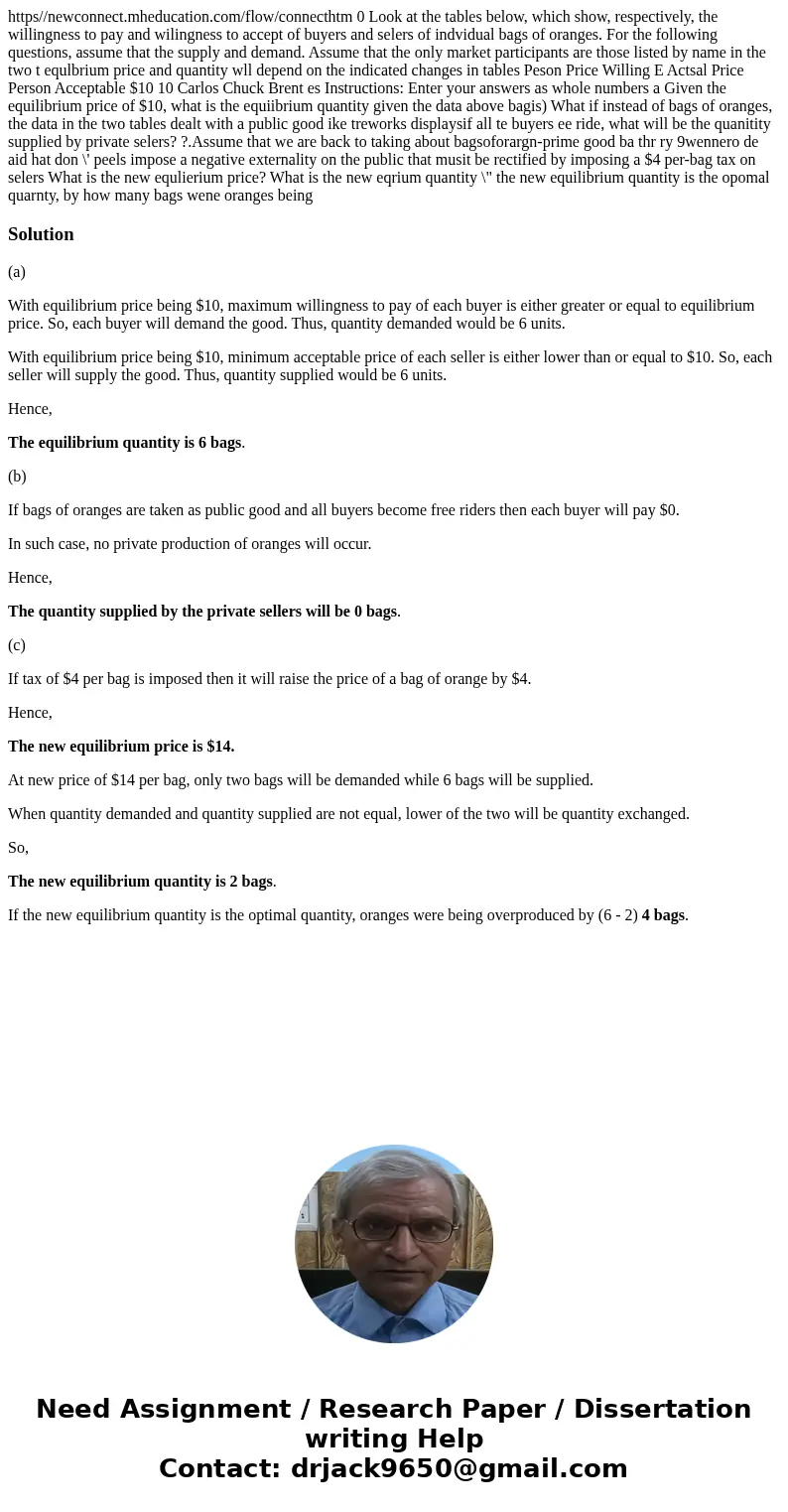httpsnewconnectmheducationcomflowconnecthtm 0 Look at the ta
Solution
(a)
With equilibrium price being $10, maximum willingness to pay of each buyer is either greater or equal to equilibrium price. So, each buyer will demand the good. Thus, quantity demanded would be 6 units.
With equilibrium price being $10, minimum acceptable price of each seller is either lower than or equal to $10. So, each seller will supply the good. Thus, quantity supplied would be 6 units.
Hence,
The equilibrium quantity is 6 bags.
(b)
If bags of oranges are taken as public good and all buyers become free riders then each buyer will pay $0.
In such case, no private production of oranges will occur.
Hence,
The quantity supplied by the private sellers will be 0 bags.
(c)
If tax of $4 per bag is imposed then it will raise the price of a bag of orange by $4.
Hence,
The new equilibrium price is $14.
At new price of $14 per bag, only two bags will be demanded while 6 bags will be supplied.
When quantity demanded and quantity supplied are not equal, lower of the two will be quantity exchanged.
So,
The new equilibrium quantity is 2 bags.
If the new equilibrium quantity is the optimal quantity, oranges were being overproduced by (6 - 2) 4 bags.

 Homework Sourse
Homework Sourse